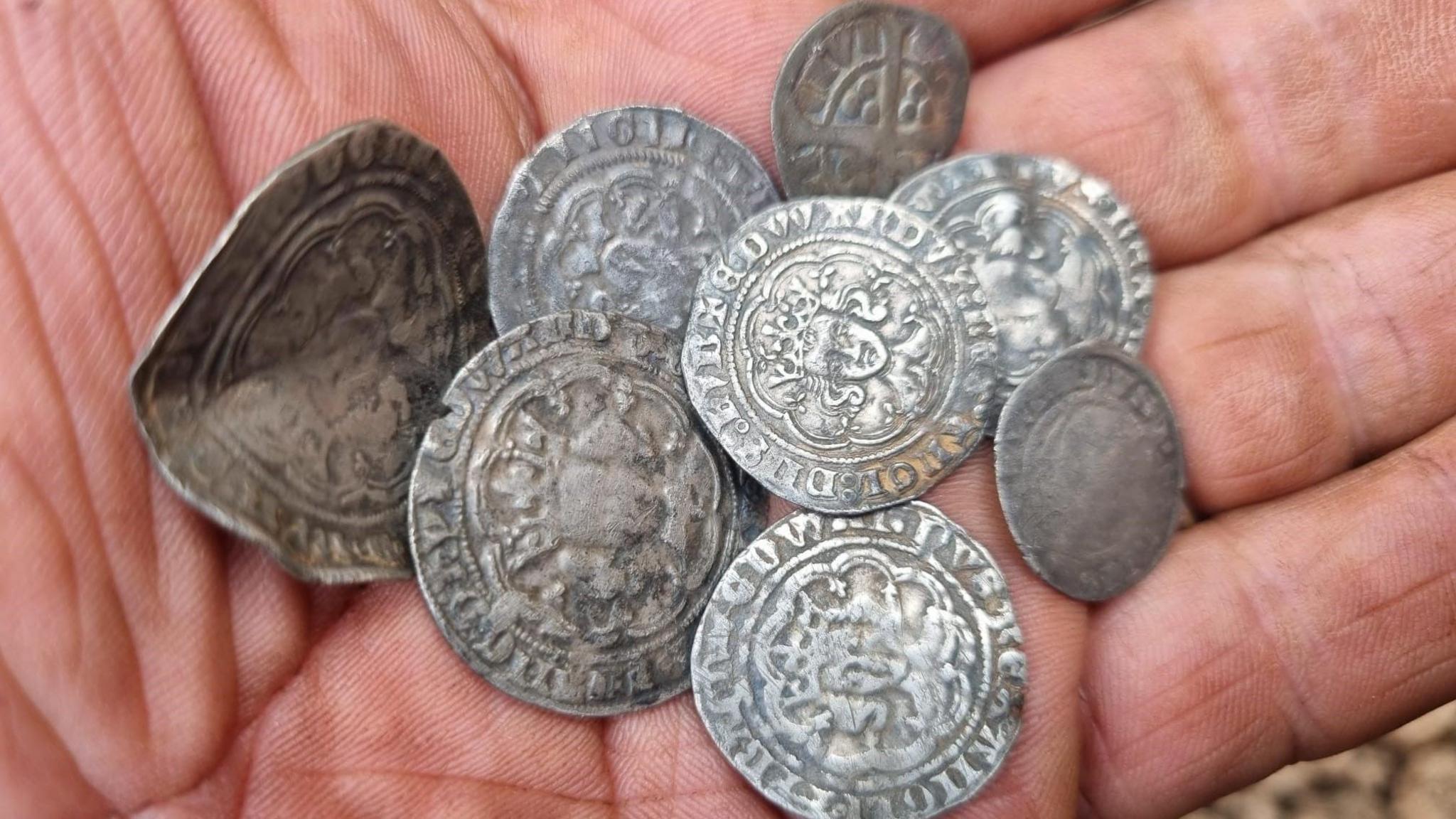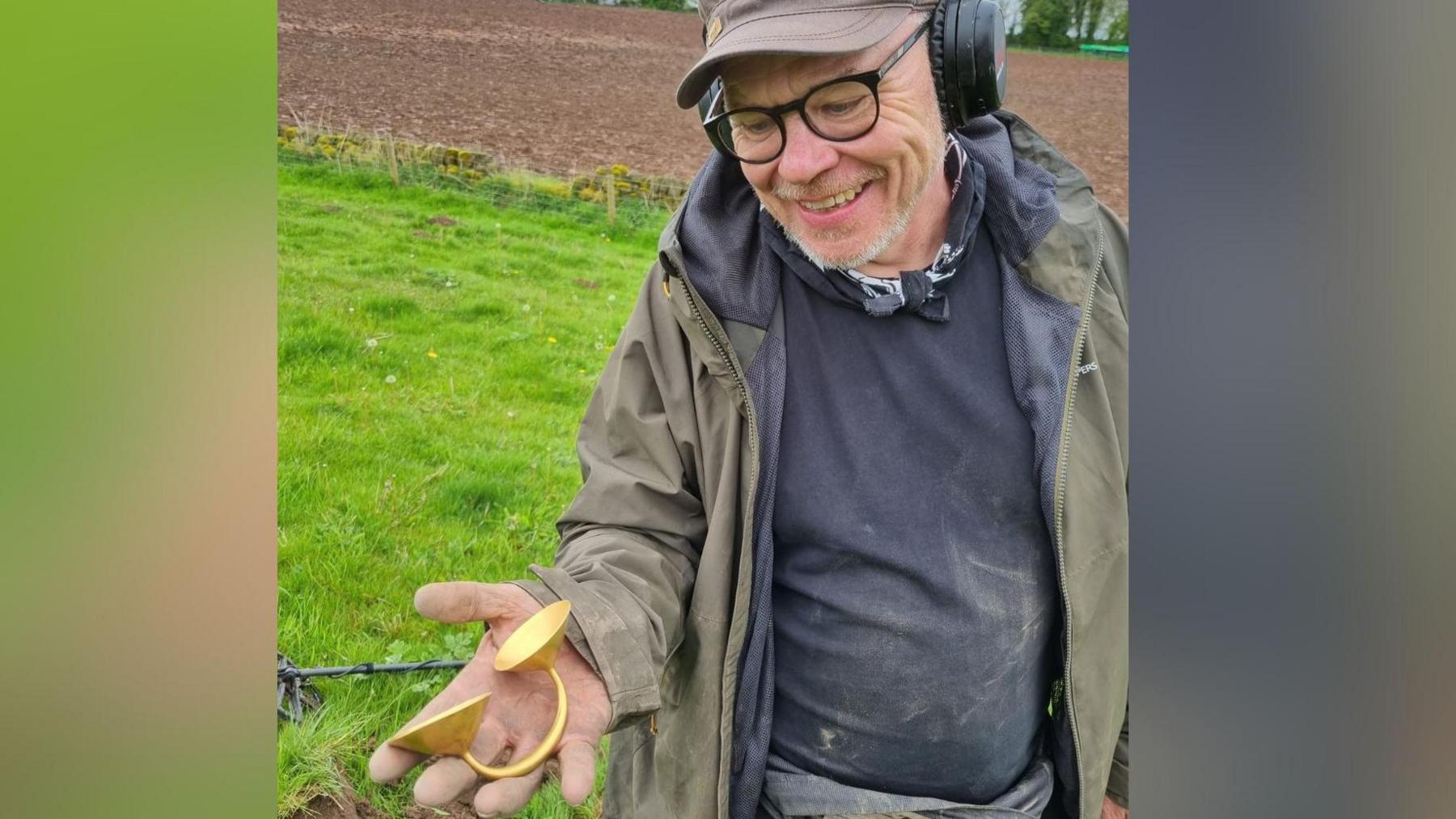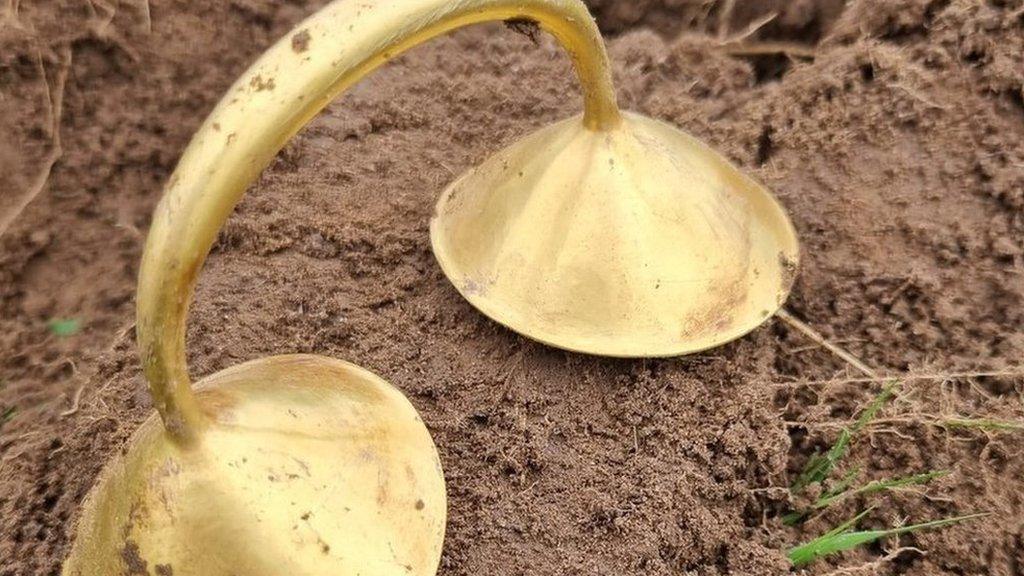Metal detectorist uncovers hoard of medieval coins

The eight silver coins, dating back to the 1300s, were found buried in a Derbyshire field
- Published
A metal detectorist who unearthed a rare item made of Bronze Age gold has now discovered a hoard of medieval coins.
The eight pieces of silver, which date back to the 14th Century, were found in a field in Norbury, near Ashbourne in Derbyshire.
A special court hearing has ruled they can be classed as treasure, which means the detectorist and landowner should split any proceeds.
Derby Museum has expressed an interest in acquiring the coins.

Jonathan Needham originally thought the gold dress or cloak fastener was a furniture handle
Meanwhile, a different court is due to rule on what happens to the 3,000-year-old piece of gold Jonathan Needham discovered at nearby Ellastone, Staffordshire.
Thought to be a cloak or dress fastener, it is said to be one of only seven ever found in England. Mr Needham said he hopes it will be worth a "life-changing amount".
Despite the value of the coins being much less, the 54-year old from Hucknall, Nottinghamshire, said he was still excited by the find.
"It happened late on a Friday evening, while I was going back to the car," he said.
"I found half a groat dating back to the time of Edward III - and a mate told me you don't find those on their own.
"So I went back the next morning and within a few hours I'd uncovered seven more coins, stretched over 30m (100ft), along an ancient plough line."
It is thought the coins may originally have been together in a purse which had been accidentally dropped or hidden.
The coins were made up of two silver pennies, four silver half groats and two silver groats.

One of the silver half a groat coins unearthed in Derbyshire by metal detectorist Jonathan Needham
All apart from one are thought to have been minted, or struck, shortly after the Black Death, a bubonic plague which affected Europe from 1346 to 1353.
Mr Needham said: "It was a turbulent time in history - the country was being rebuilt. I'm really thrilled they are hopefully going to be in Derby Museum.
"I'll enjoy going to see them and taking my Mum along."
At an inquest in Derby on Monday, Assistant Coroner for Derbyshire Sophie Lomas said that once the British Museum had assessed their importance and a committee had set a value, a reward could be paid.
Meghan King, finds liaison officer for Derbyshire and Nottinghamshire, said: "The value will depend on the market at the time they were found.
"The Treasure Valuation Committee and a professional valuer will make an assessment.
"The Museum has expressed an interest in them as it doesn't have any coins of that type in its collection."
She said if the price was right, they could be displayed in a case to highlight recent finds in Derbyshire.
Follow BBC Derby on Facebook, external, on X, external, or In, externalstagram, external. Send your story ideas to eastmidsnews@bbc.co.uk, external or via WhatsApp, external on 0808 100 2210.
- Published31 January 2024
